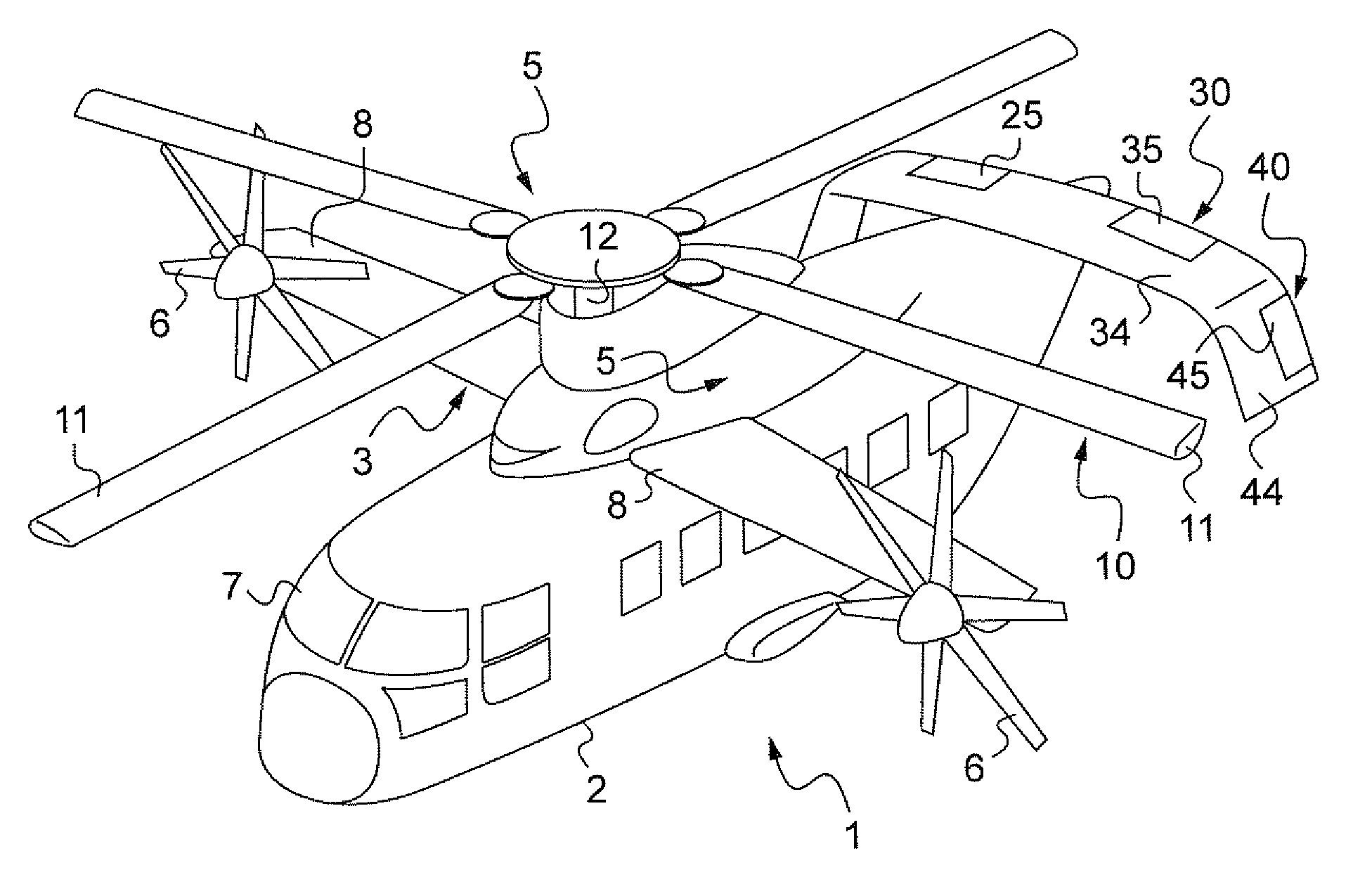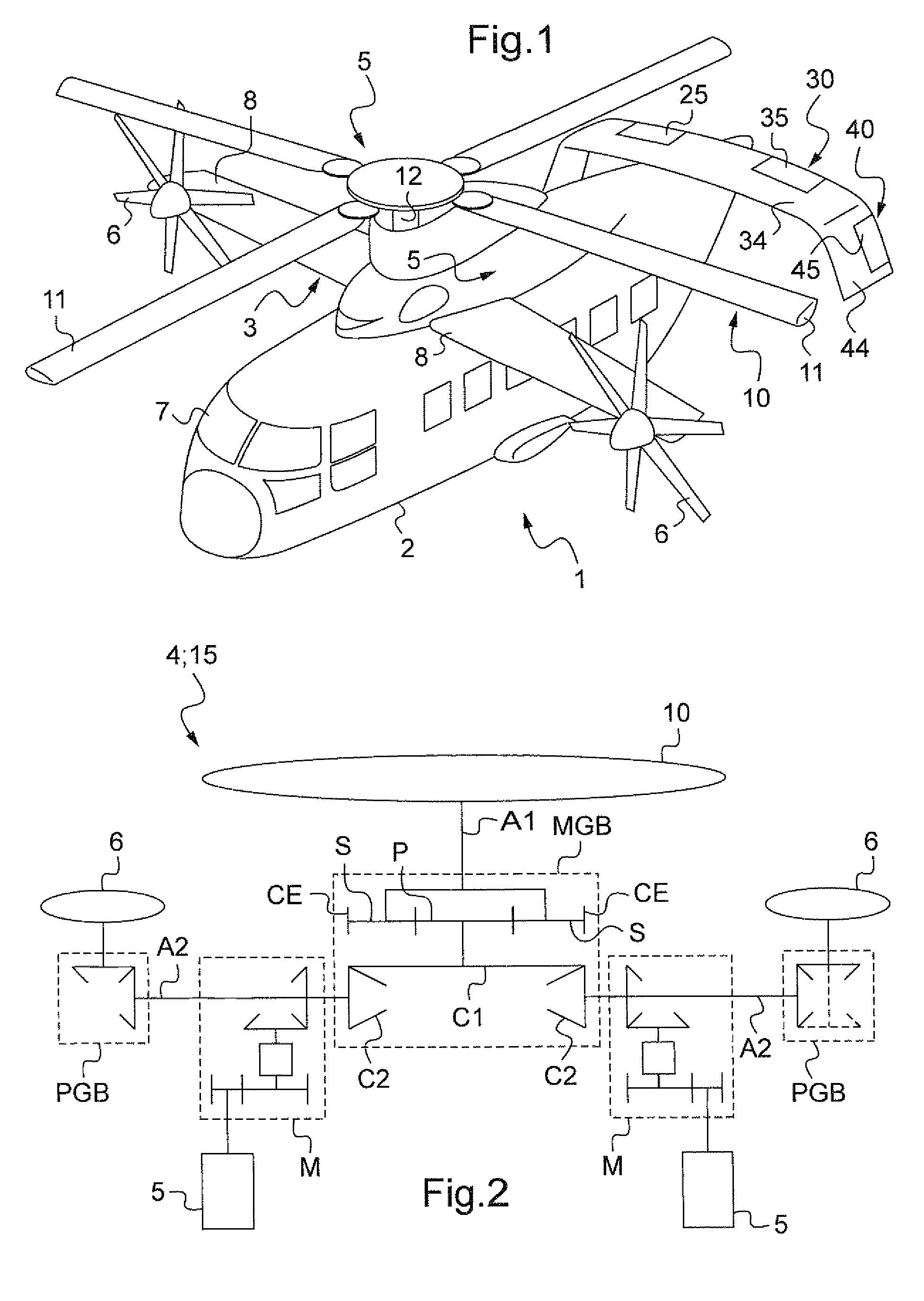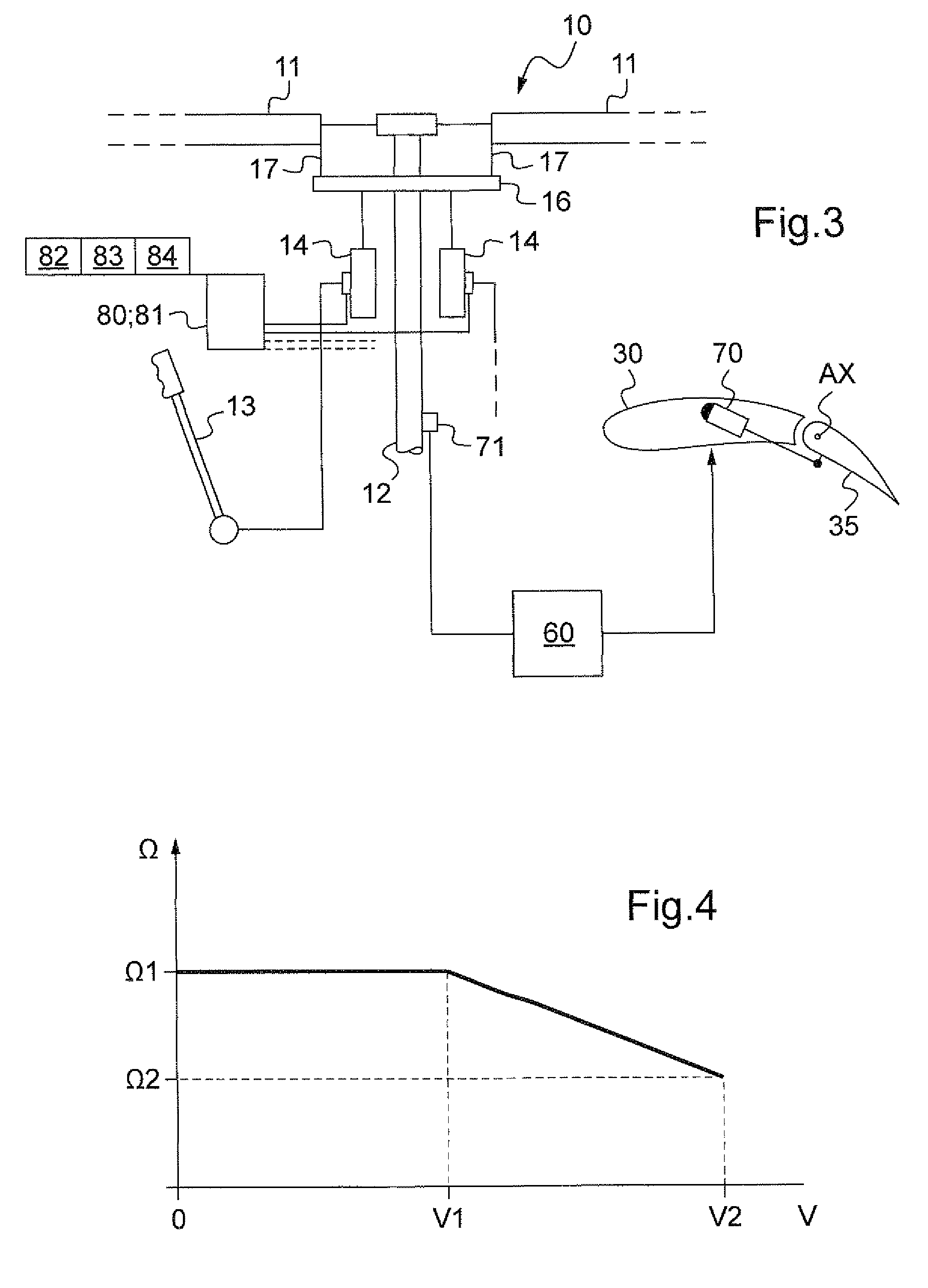Rotorcraft control system
a control system and rotorcraft technology, applied in the field of rotorcraft, can solve the problems of inability to perform hovering flight, inability to vertical flight, and complicated technical details, and achieve the effect of increasing the power needed and saving weight and cos
- Summary
- Abstract
- Description
- Claims
- Application Information
AI Technical Summary
Benefits of technology
Problems solved by technology
Method used
Image
Examples
Embodiment Construction
[0123]In the meaning of the present application, the term “hybrid helicopter” means a rotorcraft fitted with one or more thrusters, with regulation adapted both to the operation of the rotor and to the operation of the propellers.
[0124]Unless specified to the contrary, implicitly or explicitly, the term “rotor” designates a rotary wing of the rotorcraft.
[0125]Unless specified to the contrary, implicitly or explicitly, any element present in two or more distinct figures is given the same reference in each of them.
[0126]With reference to FIG. 1 in particular, the hybrid helicopter 1 comprises a fuselage 2 with a cockpit 7 at the front thereof, a rotor 10 for driving blades 11 in rotation by means firstly of two turbine engines 5 disposed on top of the fuselage 2 (not visible in FIG. 1 because of the presence of fairing), on either side of the longitudinal plane of symmetry of the rotorcraft, and secondly a main first gearbox MGB (not shown in FIG. 1).
[0127]Furthermore, the hybrid heli...
PUM
 Login to View More
Login to View More Abstract
Description
Claims
Application Information
 Login to View More
Login to View More - R&D
- Intellectual Property
- Life Sciences
- Materials
- Tech Scout
- Unparalleled Data Quality
- Higher Quality Content
- 60% Fewer Hallucinations
Browse by: Latest US Patents, China's latest patents, Technical Efficacy Thesaurus, Application Domain, Technology Topic, Popular Technical Reports.
© 2025 PatSnap. All rights reserved.Legal|Privacy policy|Modern Slavery Act Transparency Statement|Sitemap|About US| Contact US: help@patsnap.com



